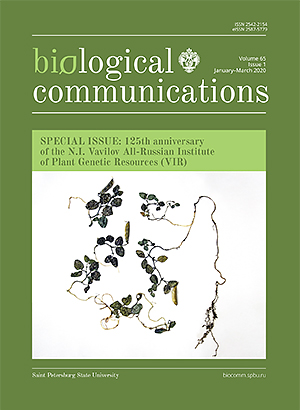The Vavilov Institute’s (VIR) contribution to the survey and study of Vavilovia formosa (Fabaceae)
DOI:
https://doi.org/10.21638/spbu03.2020.103Abstract
In the 1960s–1980s, the Vavilov Institute of Plant Industry, known worldwide as VIR, organized a substantial series of studies dedicated to a Caucasian endemic, the Pliocene relic Vavilovia formosa (Fabeae: Fabaceae). Those investigations are little known to the scientific community, although, in fact, the priority right for integrated research into this plant belongs to VIR. As a result of the cycle of studies, the first ideas about the biology and ecology of the species, the manner of its reproduction, its intraspecific diversity, the degree of crossability with other members of the tribe, its karyotype and anatomy were developed. The plants of V. formosa are not reproduced ex situ and their germplasm is absent in the world’s gene banks. Therefore, collecting V. formosa plants in their hard-to-reach habitats in the mountains is always crucial for research purposes, so a number of collecting expeditions were launched to the Greater Caucasus. The data thus obtained are discussed in the context of modern achievements in world science regarding this species.
Keywords:
Vavilovia formosa, Caucasian endemic, VIR, expeditions, collecting mission, ecological, anatomical, karyological, immunochemical, hybridological studies
Downloads
References
Downloads
Published
How to Cite
License
Articles of Biological Communications are open access distributed under the terms of the License Agreement with Saint Petersburg State University, which permits to the authors unrestricted distribution and self-archiving free of charge.





